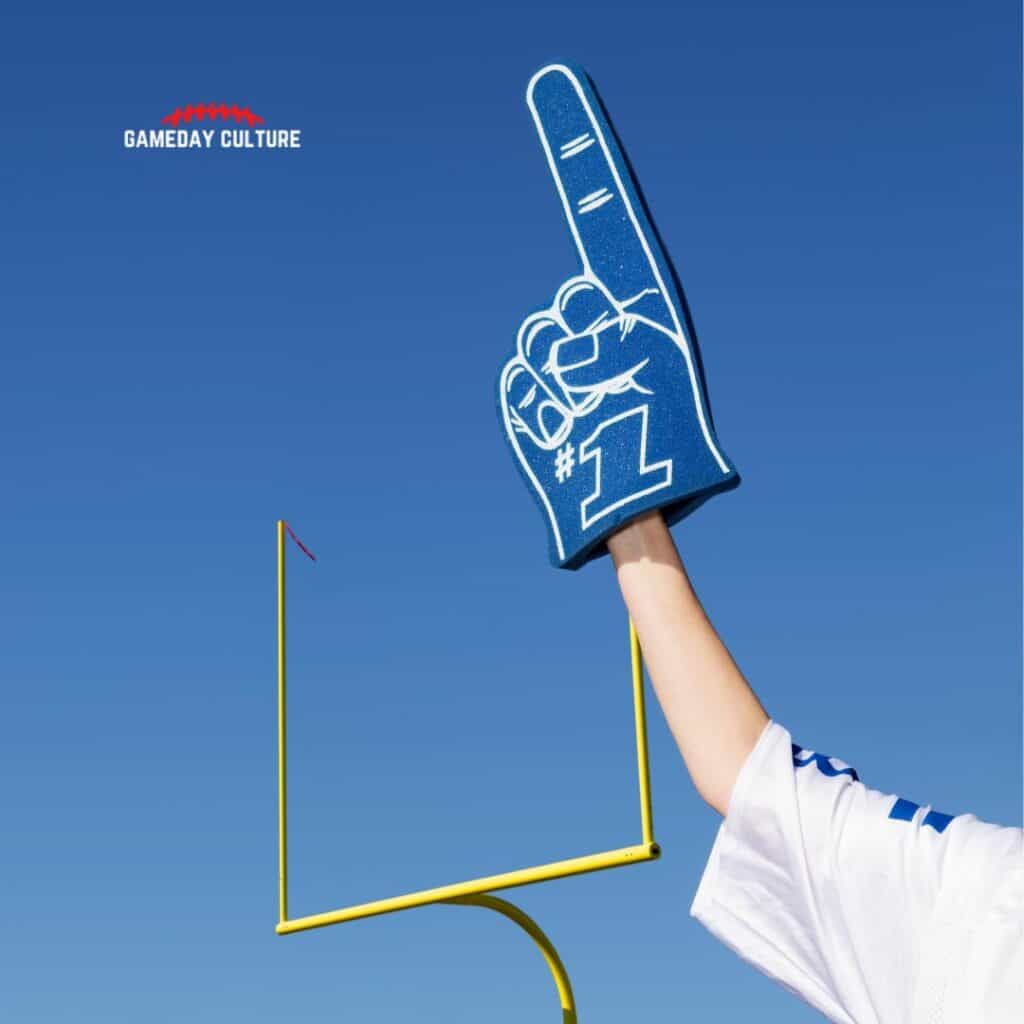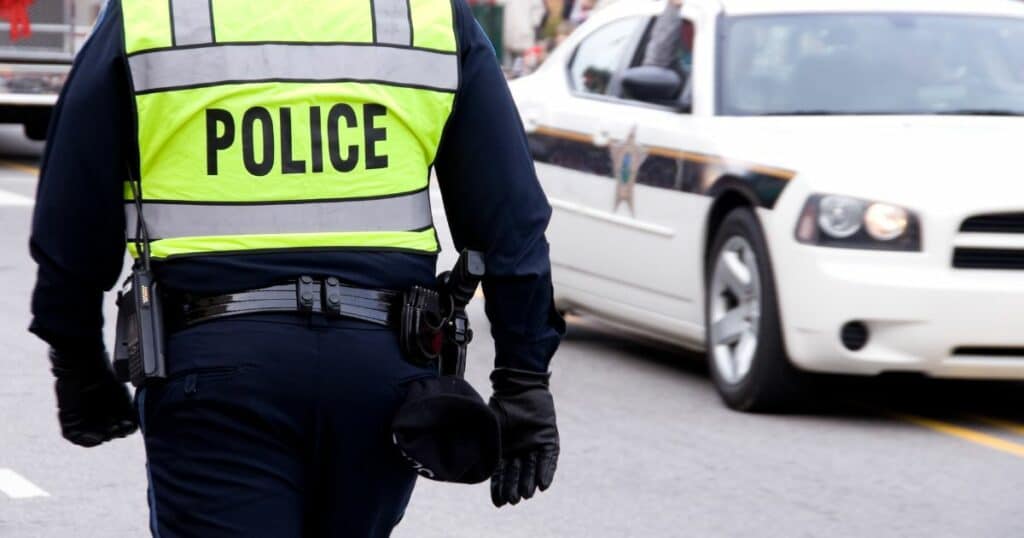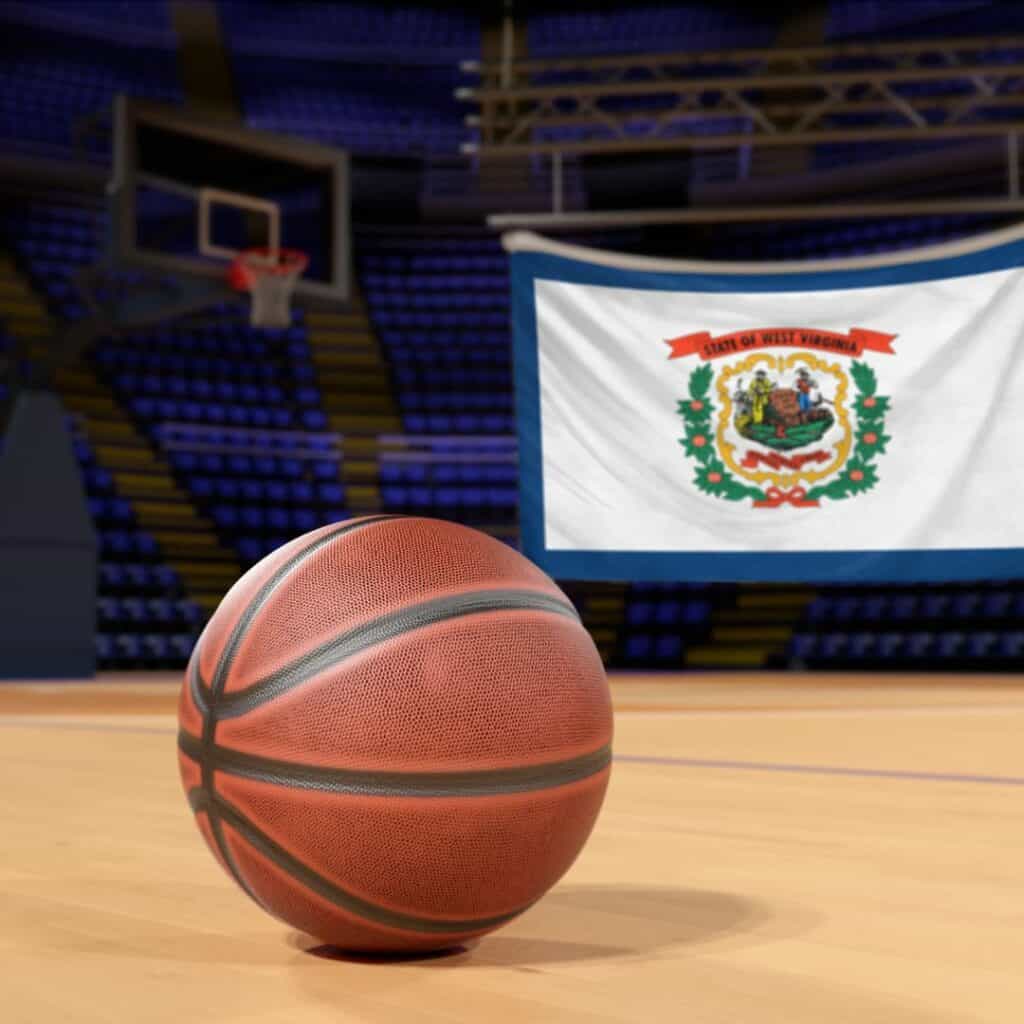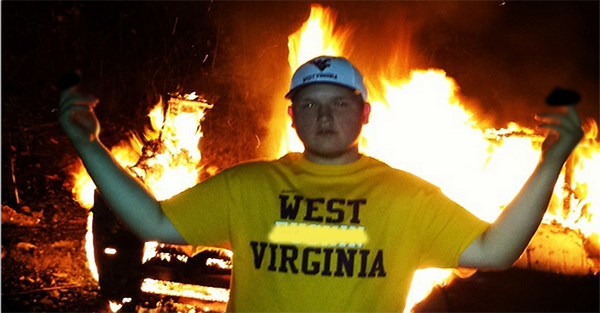History of West Virginia Burning Couches: A Cultural Phenomenon
Burning couches and West Virginia University (WVU) – an unlikely combination that has sparked not only fires but a burning debate, controversy, and a unique, if notorious, identity.
The tradition of setting ablaze old, often abandoned couches following major sports victories has turned into an emblem of Mountaineer spirit, with its flames leaping into national headlines and social media feeds.
However, the story behind this fiery tradition isn’t all cheer and celebration. From its murky origins in the 1970s to its place in present-day pop culture, the couch-burning tradition of WVU navigates the winding road of sports fervor, law enforcement, public safety, and media influence, shedding light on a university tradition as enduring as it is controversial.

Origins of the Tradition
Couch burning at West Virginia University (WVU) has become a well-known tradition, but its origins are not entirely clear.
According to Tenant, the fire-setting tradition started in the mid-1970s when students lit bonfires all along University Avenue following a win over rival University of Pittsburgh. However, others have suggested that the tradition dates back even further.
Regardless of its exact origins, couch burning has become a defining feature of WVU’s identity. It has been featured in news stories, documentaries, and even popular culture.
The tradition has also been a source of controversy, with some arguing that it is dangerous and destructive.
Despite efforts to curb the practice, couch burning has persisted over the years. In 2005, fire officials in Morgantown ordered all upholstered furniture, debris, and flammable objects to be removed from city porches in student neighborhoods due to safety concerns.
Couch burning continued, and it has even led to riots and property damage.
Today, couch burning remains part of WVU’s culture, with students and alumni embracing the tradition as a symbol of school spirit.
However, it is important to note that the practice is illegal and dangerous, and it can have serious consequences for those who participate in it.
Couch Burning in Morgantown
Couch burning has become an infamous tradition among West Virginia University (WVU) students in Morgantown. WVU students have been setting couches on fire after big victories since the 1970s. These fires have caused significant property damage and have even led to injuries.
The tradition of couch burning began after a WVU football victory in the 1970s. It quickly became a popular way for students to celebrate big wins. However, the tradition has become increasingly dangerous over the years.
In 1981, more than 600 fans stormed the streets of Sunnyside, blocking streets and setting fires. According to a report in the Dominion Post, crowds roaming Sunnyside started new fires as soon as old ones were extinguished, despite numerous arrests.
The Morgantown Fire Department has been tasked with putting out these street fires. However, they have been met with resistance from the students.
According to an article in The Daily Athenaeum, students have been known to throw bottles and rocks at firefighters trying to extinguish the fires. This has led to a strained relationship between the Morgantown Fire Department and WVU students.
In 2011, couch burning became a felony in Morgantown. Despite this, students have continued to set items of furniture ablaze after big Mountaineer victories. In response, WVU made a public service announcement urging students not to participate in couch burning. However, this has not deterred students from continuing the tradition.
Couch burning has become a major issue in Morgantown. It has caused significant property damage and has put the safety of WVU students and residents at risk. Despite efforts to stop the tradition, it continues to this day.
The Role of Sports

Sports have played a significant role in the tradition of burning couches in West Virginia. The practice is often associated with the university football and basketball team’s victories, where students and fans would take to the streets to celebrate.
The burning of couches became a way to express their excitement and joy, and it has since become a part of the culture in West Virginia.
The tradition of burning couches after sports victories started in the 1970s, when the university football team won a game against the University of Pittsburgh. The students and fans were so excited that they took to the streets, and someone set a couch on fire.
The practice became more common over the years, and it was not limited to just football victories. Students and fans would burn couches after basketball victories as well.
The tradition of burning couches has also been associated with riots and violence. The celebrations sometimes turned into riots, and the police had to intervene.
The burning of couches and other objects led to property damage and injuries. In response, the government passed a law banning the outdoor burning of upholstered furniture in 2012.
Despite the ban, the tradition of burning couches continues to this day. The university and the government have tried to discourage the practice by imposing fines and other penalties, but it has not stopped the students and fans from celebrating their sports victories in this way.
Law Enforcement and Legal Consequences

The tradition of burning couches in West Virginia has been met with various law enforcement and legal consequences over the years.
In 1997, the city of Morgantown enacted an ordinance that made it illegal to burn any upholstered furniture, including couches, in public. Violators faced a fine of up to $1,000 and/or up to six months in jail. Despite this, couch burning continued to occur after big sports victories or losses.
In 2011, the city of Morgantown increased the penalty for couch burning to a felony offense, punishable by up to three years in prison and a $5,000 fine. This move was made in response to the growing number of couch burnings and the damage they caused to public and private property.
Law enforcement efforts to curb couch burning have included increased patrols, surveillance cameras, and undercover officers. In some cases, police have used tear gas and pepper spray to disperse crowds and prevent couch burning.
Individuals who have been caught burning couches have faced legal consequences, including fines, probation, and even jail time.
In addition, those who have been found guilty of malicious burning, which is the intentional setting of a fire that causes property damage or endangers the lives of others, can face even more severe legal consequences.
Despite these enforcement efforts and legal consequences, couch burning continues to be a problem in West Virginia.
The Risks and Dangers
Burning couches is a nuisance and poses several risks and dangers. The flames can quickly get out of control, causing property damage and endangering the lives of participants and bystanders.
The Morgantown City Council has tried to curb the tradition by passing an ordinance that makes it illegal to burn furniture or other items in public places. Violators can face fines and even imprisonment.
Despite the risks, students and fans continue to engage in the practice, often leading to riots and clashes with law enforcement. During the riots, participants may become violent, leading to injuries and damage to property.
Moreover, the smoke and debris from the burning couches can cause respiratory problems and environmental pollution. The toxic fumes released into the air can be harmful to both humans and animals.
Burning couches is a dangerous and illegal practice that causes property damage and poses risks to human health and the environment. Discouraging such activities and promoting safe and responsible behavior among students and fans is important.
Public Response and Perception
The public response and perception of West Virginia University’s couch-burning tradition has been mixed. While some see it as a harmless tradition and a way to celebrate victories, others view it as a public nuisance and a dangerous practice that encourages mob mentality.
The media has played a significant role in shaping public perception of the tradition.
Coverage of the events has often focused on the rowdy and chaotic nature of the celebrations, painting the university in a negative light. This has led to WVU being labeled as a top-party school and a rowdy institution.
The university administration has taken steps to address the issue, including passing a law banning the use of upholstered furniture outside and creating public service announcements discouraging the practice.

However, some students and alumni continue to view couch burning as a social activity and a way to bond with fellow Mountaineers.
Overall, the perception of the couch-burning tradition is a complex issue with no clear consensus. While some view it as harmless fun, others see it as a dangerous practice that needs to be stopped.
The reality likely lies somewhere in between, with the tradition being a reflection of the social atmosphere at WVU and the enthusiasm of its students.
Influence of Media and Social Platforms
The tradition of burning couches at West Virginia University has been a subject of media attention for decades. The practice has been featured in news articles, documentaries, and even in popular TV shows.
The media coverage has helped to create a national identity for WVU as a party school, and the couch-burning tradition has become a part of that identity.
many claim social platforms have also played a role in the spread of information about couch burning. Videos of students setting couches on fire have been shared on YouTube and other social media platforms, reaching a wider audience than ever before.
The videos are believed to have contributed to the perception of WVU as a school with a wild party scene.
The student government association at WVU has attempted to combat the negative perception of the university by working with local media outlets to promote positive stories about the school.
However, the efforts have been largely unsuccessful, as the couch-burning tradition continues to be a dominant narrative in the media.
It is worth noting that the couch-burning tradition has also been linked to more serious incidents. In 2011, a WVU student was killed in a riot that broke out after a basketball game. The incident received national attention and led to increased scrutiny of the university’s party culture.
Overall, the influence of media and social platforms on the couch-burning tradition at WVU has been significant. The tradition has become a part of the university’s national identity whether the administration likes it or not.
While efforts have been made to combat the negative perception of the university, the couch-burning tradition remains a dominant narrative in the media.
Recent Developments and Changes
In recent years, several developments and changes have occurred regarding the burning of couches in West Virginia. Here are some of the most notable ones:
- Fines for couch burning: In 2014, the Morgantown City Council passed an ordinance that imposed fines of up to $1,000 on individuals caught burning couches or other upholstered furniture in public spaces. This was an attempt to discourage the dangerous and destructive practice which had become common after WVU football victories.
- Expulsion from school: WVU began to crack down on students who participated in couch burning in addition to fines. In 2015, the university announced that any student who was caught burning a couch would be subject to expulsion. This was a significant change from previous years, when students who were caught burning couches were typically only given a slap on the wrist.
- Public Service Announcement: The Morgantown Fire Department and Fire Marshal Ken Tennant released a public service announcement in 2015 warning residents about the dangers of couch burning. The PSA highlighted the fact that burning couches could lead to serious injuries and property damage, and encouraged people to find safer ways to celebrate WVU victories.
- Ban on outdoor furniture: In 2015, the Morgantown City Council also passed an ordinance banning the use of upholstered furniture outside. This was an attempt to prevent people from burning couches and other furniture in public spaces. The ban included not only couches, but also chairs, love seats, and other upholstered items.
Despite these efforts to discourage couch burning, the practice still continues to some extent. However, the number of incidents has decreased significantly in recent years, and it seems that the city and university’s efforts are starting to pay off.

Your Thoughts?
What do you think? What is the right balance of keeping a tradition like this alive vs. too much risk for the University?
I’d probably agree with the too much risk-taking given the deadly outcomes at Texas A&M and also WVU. That said, if you have never experienced the smell (and excitement) of a burning couch or wooden bench after a big win, it is a unique experience.
Other popular sports traditions include:
- “Jump Around” at University of Wisconsin: At Camp Randall Stadium, when the Badgers are playing, one of the most electrifying moments occurs between the third and fourth quarters when the song “Jump Around” by House of Pain blasts from the speakers, and the entire crowd, quite literally, jumps around.
- “Rolling Toomer’s Corner” at Auburn University: Winning a game means a fun trip to Toomer’s Corner for Auburn fans. The tradition involves covering the old oak trees in toilet paper, creating a beautiful spectacle of white amidst the revelry.
- The “12th Man” at Texas A&M: At Kyle Field, the entire student body stands throughout the game, representing the “12th Man” on the team, ready to support and step in if necessary, symbolizing their unwavering support for their team.
- “Dotting the ‘i'” at Ohio State University: One of the most revered traditions in college football, a sousaphone player from the Ohio State Marching Band “dots the ‘i'” during the “Script Ohio” formation at each home game.
- The “Fifth Quarter” at University of Wisconsin: The Badger Band takes the field postgame, playing a series of school songs, popular tunes, and polka in what has become an institution almost as beloved as the game itself.
- “Rushing Franklin Street” at University of North Carolina: After a big victory, particularly against rivals Duke University, Tar Heel fans rush onto Franklin Street to celebrate amidst bonfires and fireworks.
- “Sailgating” at Baylor University: Taking tailgating to a new level, Baylor fans celebrate on boats on the Brazos River right by McLane Stadium before football games, a unique tradition known as “sailgating.”
- The “Rock Chalk, Jayhawk” Chant at University of Kansas: A haunting and melodic chant, “Rock Chalk, Jayhawk” echoes around the stadium during Kansas Jayhawks’ games, a tradition that goes back to the 1880s.
- “Running of the Buffaloes” at University of Colorado: A team of handlers called “Ralphie’s Runners” guide Ralphie, a live buffalo and the school’s mascot, around Folsom Field at a gallop before each half of each home game, much to the delight of the crowd.
- “Midnight Yell” at Texas A&M University: On the eve of each football game, Aggie fans gather at Kyle Field for “Midnight Yell,” a massive pep rally featuring yells led by the school’s Yell Leaders.
These traditions, each unique and captivating in their own way, have become an integral part of the college sports experience, imbuing games with a sense of community, enthusiasm, and enduring spirit that reaches beyond the sport itself.
Other Traditions Around The Sports World Worth Reading About
Frequently Asked Questions
Why is burning couches a tradition in West Virginia?
Burning couches has become a tradition in West Virginia due to the state’s strong sports culture and the tendency for students to celebrate big wins by setting furniture on fire. The tradition gained national attention when West Virginia University switched to the Big 12 athletic conference, and has since become a part of the state’s identity.
What are the origins of the couch burning tradition in West Virginia?
The origins of the couch burning tradition in West Virginia are unclear, but it is believed to have started in the 1970s as a way for students to celebrate big wins by the WVU football team. The tradition has since become a regular occurrence after major victories in all sports.
What is the significance of burning couches in West Virginia?
Burning couches is seen as a way for students to show their passion and support for their school’s athletic teams. It has become a part of the state’s culture and identity, and is often seen as a rite of passage for WVU students.
Has burning couches in West Virginia ever caused any injuries or fatalities?
There have been reports of injuries and property damage caused by couch burning in West Virginia. In 2014, a student was severely burned while trying to jump over a burning couch. The incident led to increased efforts to discourage the tradition.
What is the history of the Burning Couch Festival in West Virginia?
The Burning Couch Festival is an annual event held in Morgantown, West Virginia, that celebrates the tradition of couch burning. The festival features live music, food and drink vendors, and a couch burning ceremony. The festival has faced criticism for promoting dangerous and destructive behavior.
What are the legal consequences of burning couches in West Virginia?
Burning couches is illegal in West Virginia, and those caught participating in the tradition can face fines and even jail time. In 2015, the city of Morgantown passed a law banning the use of upholstered furniture outside in an effort to curb the tradition. However, the tradition still persists despite efforts to stop it.

